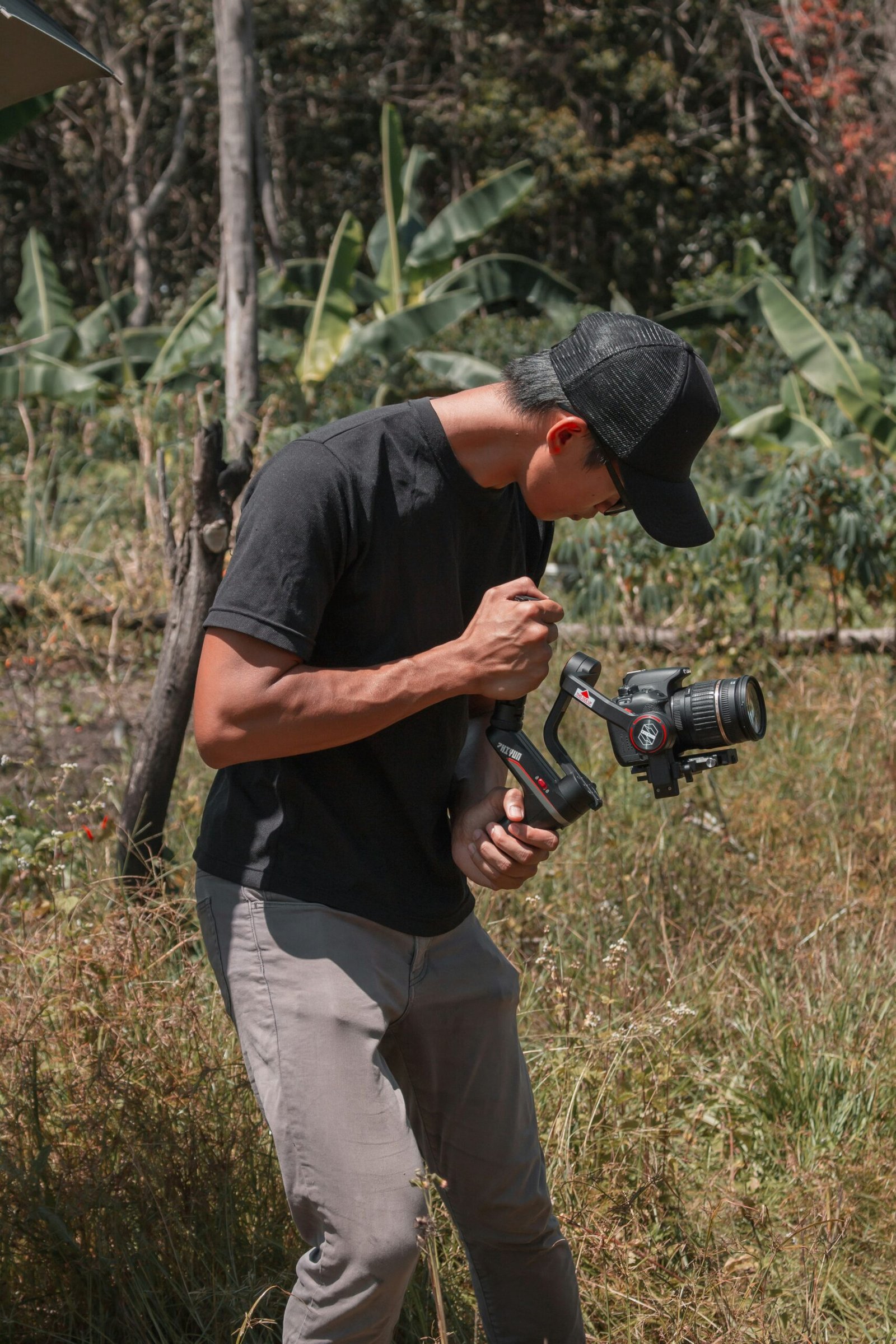Introduction to San Antonio’s Photographic Charm
San Antonio, a city teeming with rich history and vibrant culture, stands as one of the prime locations for photography enthusiasts. Nestled in the heart of Texas, San Antonio offers an eclectic mix of historical landmarks, diverse architecture, and colorful vistas that collectively provide ample opportunities for stunning photographs. The city’s unique blend of old-world allure and modern vibrancy captivates the eye, making it a paradise for those looking to capture incredible images.
One of the many charms of San Antonio lies in its preservation of historical sites. The Alamo, Mission San José, and Mission Concepción are just a few iconic examples that offer photographers a chance to step back in time and capture the essence of early American history. The intricate stonework, expansive courtyards, and the ambient light filtering through ancient trees create breathtaking scenes perfect for photography.
The city’s architecture is another compelling aspect. From the Spanish colonial style to the modern glass edifices, San Antonio’s buildings speak of a diverse and evolving identity. The renowned River Walk, with its winding pathways and arched stone bridges flanked by vibrant flora, is a picturesque spot that photographers flock to capture. Here, the interplay of water, light, and architecture provides myriad opportunities for capturing the perfect shot.
Moreover, the cultural vibrancy of San Antonio permeates every corner of the city. From bustling market squares and colorful murals to traditional fiestas, the city’s lively atmosphere offers endless subjects for dynamic photographs. Cultural festivals, street performances, and local art installations each present unique moments that capture the city’s spirit and celebrate its rich heritage.
In essence, San Antonio’s photographic charm is rooted in its historical richness, architectural diversity, and cultural vibrancy. Photographers are sure to find an abundance of inspiration in this dynamic Texan city, making it a must-visit destination for anyone with an eye for capturing beauty through the lens.
The Historic River Walk
San Antonio’s Historic River Walk is arguably one of the city’s most enchanting locales, providing a quintessential backdrop for photography enthusiasts. Snaking through the heart of San Antonio, the River Walk boasts scenic walkways along the San Antonio River, interspersed with quaint stone bridges and verdant riverside vegetation. The synergy of natural beauty and urban charm offers a rich tapestry of visual delights that beckons photographers from around the globe.
The meticulously landscaped pathways wind their way through a series of charming vignettes, each more picturesque than the last. From the vibrant, blooming flowers that line the riverbanks to the intricate stone masonry of the arch bridges, every element of the River Walk seems purposefully designed to enhance the artistic potential of a photograph. The lush foliage provides a striking contrast to the lively hues of adjacent shops and cafes, making for an eclectic mix that is nothing short of visually arresting.
Optimal lighting is a crucial consideration for those aiming to capture the River Walk in all its glory. Early morning and late afternoon are particularly favorable times; the soft, diffused light during these hours creates a warm, inviting ambiance that is well-suited for photography. The golden hours—shortly after sunrise and just before sunset—render the scene in exquisite tones, capturing the interplay of light and shadow in a manner that is nothing short of magical.
Additionally, the River Walk is less crowded during these times, affording photographers the luxury to experiment with compositions without the concern of bustling foot traffic. Seasonally, spring and fall offer the most balanced and comfortable conditions, with relative humidity and temperature levels that make extended photo sessions more enjoyable. Whether you’re aiming to capture the overall essence of San Antonio or focus on the minute details that comprise its charm, the Historic River Walk serves as an unparalleled canvas for your photographic endeavors.
The Alamo: A Symbolic Landmark
The Alamo stands as an enduring symbol of Texas history, capturing both the bravery of its defenders and the essence of San Antonio. Built in the 18th century by Spanish missionaries, this former mission became the focal point of the Battle of the Alamo in 1836, making it an iconic site of Texan resistance. When photographing the Alamo, one must consider its rich historical backdrop, aiming to encapsulate the solemnity and grandeur of this revered landmark.
To truly capture the essence of the Alamo, timing is crucial. Early morning light casts a soft glow, highlighting the aged stone façade and creating gentle, captivating shadows. This period ensures fewer crowds, allowing for unobstructed shots of the mission’s front. Similarly, late afternoon and the golden hour imbue the site with a warm hue, enhancing the texture and depth of the centuries-old structure.
For photographers seeking unique perspectives, consider different angles and compositions. A wide-angle lens can encompass the entire mission and its surrounding plaza, while a closer focus can highlight intricate architectural details such as the carvings and the distinctive, worn wooden doors. The use of leading lines, formed by pathways and surrounding structures, can draw the viewer’s eye towards the Alamo’s main features.
Besides the Alamo itself, its vicinity offers additional photographic opportunities. The Alamo Gardens, lush with native Texan flora, provide a serene backdrop that contrasts beautifully with the historic stone. Nearby, the San Antonio River Walk, a renowned network of walkways along the river, offers picturesque views of both the natural and urban landscapes, perfect for a leisurely photography session.
In capturing the Alamo and its surroundings, photographers not only document a geographical landmark but also pay homage to a pivotal piece of Texas history. Each photo taken at the Alamo encapsulates a piece of the Texan spirit, making it a must-visit location for anyone looking to capture the heart of Texas.
The Vibrant Pearl District
The Pearl District in San Antonio stands as a testament to the harmonious blend of historical charm and modern innovation. Photographers find this area particularly enticing due to its rich architectural tapestry, where century-old edifices coexist with contemporary structures, creating a visually compelling narrative. The district’s evolution from a 19th-century brewery hub to a bustling urban space is etched in every corner, offering myriad photographic opportunities.
A standout landmark is the iconic Pearl Brewery. This historic site, once the cornerstone of San Antonio’s brewing heritage, has been meticulously preserved while incorporating modern elements. The brewery’s exterior, with its intricate brickwork and vintage signage, provides an excellent backdrop for capturing the essence of the Pearl District’s storied past. Inside, a juxtaposition of industrial aesthetics and trendy eateries and shops invites photographers to experiment with various compositions and lighting conditions.
Equally captivating is Hotel Emma, a crown jewel of the Pearl District. Housed in a former brewhouse, the hotel exudes an old-world charm melded seamlessly with luxury. Its interiors boast plush décor, grand staircases, and inviting lounges, offering endless imaginations for the lens. The hotel’s lobby, with its blend of historical relics and contemporary style, provides a rich tableau for capturing unique and timeless images.
Amenities aside, the Pearl District is renowned for its colorful murals and street art. These vibrant artworks narrate local stories and add a burst of color against the historic backdrop. Murals scattered throughout the district create dynamic visuals and serve as focal points for street photography, making it an ideal location for those looking to explore the artistic side of San Antonio.
In addition to these highlights, the district’s lively weekend farmers’ markets, the serene River Walk extension, and various charming alleyways further augment its photographic appeal. The Pearl District, with its eclectic mix of the old and new, offers a diverse palette of scenes, cementing its reputation as one of San Antonio’s premier photography locations.
Brackenridge Park: Nature Within the City
Brackenridge Park offers a lush oasis amidst the urban sprawl of San Antonio, making it a prime location for photography enthusiasts. The park spans 343 acres and is home to a variety of landscapes that provide ample opportunities for capturing stunning images. Whether you’re aiming to capture serene landscapes, historic structures, or the intricate beauty of the Japanese Tea Garden, Brackenridge Park has something to offer.
One of the park’s highlights is the San Antonio River that meanders through. The river’s gentle flow is framed by verdant foliage, offering beautiful reflections, especially during the early morning light. For those interested in wildlife photography, the park is teeming with local flora and fauna, presenting countless moments worth capturing through the lens.
The Japanese Tea Garden, located within the park, is a particularly picturesque spot. Originally a rock quarry, it has been transformed into an exotic garden complete with a large koi pond, stone bridges, a pagoda, and a 60-foot waterfall. The intricate landscaping and serene atmosphere make it a perfect setting for both wide-angle shots and detailed close-ups.
Besides these attractions, the park’s network of trails provides additional photographic prospects. The Island Trails meander through shaded pathways, crossing charming stone bridges that offer splendid views of the surrounding nature. Along these trails, you may find hidden gems such as small cascades and secluded benches that make for compelling, intimate compositions.
Historic structures within Brackenridge Park, like the Sunken Garden Theater and the Witte Museum, offer a glimpse into the past. These historic sites, surrounded by lush greenery, provide a unique juxtaposition of old and new, making them highly photogenic. The architectural details of these structures complement the natural beauty, adding depth and narrative to your images.
In conclusion, Brackenridge Park serves as a microcosm of San Antonio’s rich natural and cultural heritage. Its varied landscape, including serene water features, intricate gardens, and historic architecture, ensures that photographers at any skill level can find compelling subjects to capture. A visit to Brackenridge Park not only enriches one’s portfolio but also provides a tranquil escape within the city.
The Tower of the Americas: A Bird’s-Eye View
Nestled in the heart of San Antonio, the Tower of the Americas stands as an iconic landmark offering photographers an unparalleled vantage point to capture the city’s sprawling cityscape. This 750-foot tower, built for the 1968 World’s Fair, provides breathtaking panoramic views that showcase the vibrant essence of San Antonio. Both seasoned photographers and amateurs will find the observation deck an essential location for capturing stunning images.
From the observation deck, you have a 360-degree view of San Antonio, providing myriad opportunities for creative shots. Daytime photography at the Tower of the Americas offers clear, unobstructed views of historic sites such as the Alamo, while the surrounding lush landscapes add a touch of natural beauty to urban scenes. Capture the city’s bustling activity, iconic landmarks, and architectural marvels with the clarity that daylight affords.
Equally enchanting are the nighttime views, where the city’s lights transform the scenery into a dazzling spectacle. The twilight hours offer a unique chance to capture the serenity of the sunset casting a warm glow over the city, transitioning smoothly into the vibrant nightlife. For those looking to immortalize the dynamic essence of San Antonio, the transition from day to night provides compelling contrasts in your photography portfolio.
Special events and times also present unique opportunities for capturing memorable shots. The Tower of the Americas often hosts firework displays during festivals, providing a dramatic backdrop against the city’s skyline. Visiting during these events can yield spectacular images that stand out. Additionally, make a note of the golden hour—the period shortly after sunrise and before sunset—when natural lighting is at its most flattering, offering soft hues for capturing the city’s details exquisitely.
Whether you’re capturing the hustle and bustle of daytime or the peaceful ambiance of a city night, the Tower of the Americas offers a prime location to achieve mesmerizing photographs that truly encapsulate the heart of San Antonio.
Street Art and Murals: Capturing Urban Expression
San Antonio, a city alive with culture and creativity, offers photographers a wealth of opportunities to capture striking street art and murals. These urban masterpieces are not only visually captivating but also serve as a form of expression and storytelling. Key neighborhoods such as Southtown and the San Antonio Cultural Arts District are particularly renowned for their vibrant street art scenes. Here, every wall tells a story, and every corner might reveal a new piece of art.
One must-visit location is the Houston Street Art Culture Near East Side (H.I.T.E.S). This area brims with colorful murals that celebrate local history and community spirit. For a comprehensive mural experience, the Travis Park Historic District features several large-scale artworks that merge historical motifs with modern artistic expressions. Each piece offers a unique perspective, making it an ideal setting for both novice and professional photographers.
A notable mural worth capturing is the “La Musica de San Anto” mural on Guadalupe Street. This vibrant piece, illustrating the rich musical heritage of the city, offers a dynamic backdrop for stunning photographs. Another iconic mural is the “Selena” mural in West San Antonio, paying tribute to the beloved Tejano music star Selena Quintanilla. The vivid colors and intricate details in these murals provide endless opportunities for artistic photography.
When photographing street art, it is essential to interact respectfully with the community. Engaging with locals can provide deeper insights into the stories behind the art and the artists who created them. Remember to respect the art by not touching or altering it in any way. Additionally, taking the time to understand and appreciate the cultural significance of the murals can enhance the overall photography experience. Always consider the best times of day for natural lighting, usually early morning or late afternoon, to capture the full vibrancy of the colors.
In summary, San Antonio’s street art and murals offer a unique canvas for photographers aiming to capture the urban heartbeat of the city. From historical tributes to vibrant contemporary pieces, these artworks provide a rich tapestry of visual stories waiting to be discovered.
Mission Trail: A Journey Through Time
The Mission Trail in San Antonio is a journey that traverses through centuries of history, offering photographers a unique blend of historical and architectural beauty. This trail encompasses five Spanish colonial missions, each a testament to the intricate artistry and cultural heritage of the 18th century. Starting with Mission Concepción, known for its unaltered, original frescoes, photographers can capture the magnificence of this historical site, particularly during the morning hours when the light gently illuminates the facade.
Next along the trail is Mission San José, often referred to as the “Queen of the Missions.” Its elaborate carvings and the iconic Rose Window are best photographed during the golden hour, where the setting sun casts a warm glow on the elaborately detailed stonework. Mission San Juan Capistrano, with its rustic granary and serene pastoral surroundings, offers a peaceful backdrop that is ideal for mid-morning photography when the soft, diffused light accentuates the textures of the mission’s stone walls.
Mission Espada stands out with its distinctive Moorish design and acequia (irrigation ditch), a feature that adds a unique element to your compositions. Early morning or late afternoon are the optimal times to photograph Mission Espada, as the slanting light enhances the mission’s historic ambiance and the surrounding landscape. Finally, Mission San Francisco de la Espada offers a glimpse of the blend of indigenous and colonial influences, with its small chapel and tranquil gardens providing an intimate setting for capturing historically rich images.
For those looking to encapsulate the grandeur and historical richness of these missions, understanding the best times of day and vantage points is crucial. Guided tours are also available, allowing for enriched photography sessions and newfound appreciation of the landmarks. The Mission Trail is not just a series of historical sites but a photographic journey through time, encapsulating the heart of San Antonio’s storied past.




